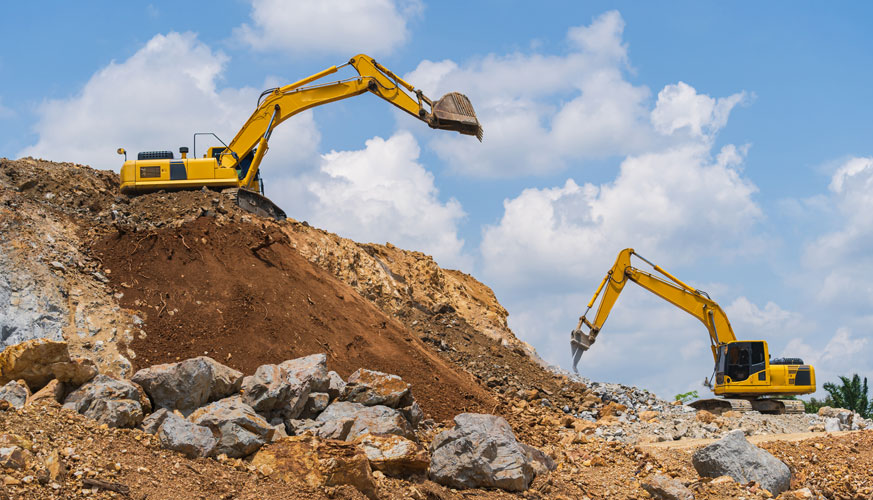Excavating and Land Grading Contractor’s Insurance
As an Excavating and Land Grading contractor, insurance is essential for protecting you against the unique risks associated with your trade. Protect yourself from potential liabilities such as third-party injuries and property damage.
Proper insurance coverage is vital in the Edmonton Excavating & Land Grading industries
Too often, insurance providers offer standard, packaged solutions they assume will work for all contractors. Our specialists in construction risk will work with you to review your portfolio, identify any associated exposures and draw up a custom solution that’s suited to your unique needs. Whether you are a tradesperson working alone, a large construction firm or an independent engineer/architect, our over 30 years of in-depth experience in working with the contracting industry have given us the unique expertise to craft coverage that’s specific to you and your business.
Why do I need Excavating & Land Grading Insurance?
- Protection for property, tool, supply and equipment losses due to fire, vandalism, theft and more
- Protection for equipment breakdowns
- Protection for liability losses due to injury or third-party property damage
- Protection for errors and omissions
- Protection for loss of income due to business interruption and more
- Protection for automobile losses due to accidents and vandalism
- Protection for cyber losses due to data loss, credit card breach and other digital threats

Excavation Contractor’s face unique risks
As an Excavating and Land Grading contractor the risks you face are unique to you and your insurance should reflect that. Excavating Contractor’s Insurance will provide coverage for anything from property damage and injury to theft of tools.
Property Exposures:
- Property exposures at the excavator’s own location are generally limited to those of an office operation and storage of equipment and vehicles. Vehicles stored in the yard may be subject to theft or vandalism.
Inland Marine Exposures:
- Inland marine exposures are primarily from contractors’ equipment. Excavation equipment can be heavy and difficult to transport without adequate loading, tie-down and unloading procedures.
- During excavation, the equipment’s load capacity may be exceeded, resulting in damage.
- Frequently, the construction site presents uneven ground in a rural area.
- Equipment may strike underground objects; strike utilities; fall into holes or pits; slip or fall into muddy water or sinkholes; be damaged in rock, land or mud slides; or burst into fire from overload.
- Equipment may be subject to water hazards, drop and fall from heights, or being struck by other vehicles. If equipment is left at job sites, theft and vandalism may be significant hazards unless proper controls are in place.
Occupier’s Liability Exposure
- Occupiers’ Liability exposures at the contractor’s office are generally limited due to lack of public access to the premises.
- At the job site, digging and other operations pose numerous hazards. The general public or employees of other contractors can be injured due to trips and falls over debris, equipment or uneven ground.
- Construction sites create an attractive nuisance hazard, especially if work is close to residential areas.
- Digging can result in cutting utility cable, damaging utility property and disrupting services to neighbouring residences or businesses.
- A significant morale hazard may be indicated by the absence of detailed procedures to determine utility locations and to research prior uses of the land.
- Excavating in an area of existing structures requires extra vigilance to prevent foundation and structural damage to nearby buildings.
- To control access to the job site, the contractor may employ spotters, post signs and install physical barriers where appropriate.
- Once a hole is excavated, there must be shoring or other supports to prevent collapse if people are to work in the hole.
Automobile Exposures
- Automobile exposures can be high due to the transport of oversize machinery and equipment. Roads in rural areas may be narrow and the ground could be uneven, increasing the risk of collision and resulting in losses.
Workplace safety exposures
- Workplace safety exposures can be high. Lifting strains and crush injuries may arise at any phase of the operations. Serious injuries may also arise during work with hand tools, large, heavy machinery, or from the carelessness of fellow employees.
- Frequent and severe losses can occur from striking objects or utilities (especially electrical cable or gas lines), the collapse of retaining or holding walls, mudslides or landslides, underground water, and sinkholes.
What types of Business Insurance do I need?
There are many types of insurance policies that our experts can advise you on and package to meet your specific needs, such as:
- Commercial General Liability
- Commercial Property Insurance
- Business Interruption Insurance
- Pollution Liability Insurance
- Professional Liability Insurance
- Product Liability Insurance
- Equipment Breakdown Insurance
- Commercial Auto Insurance
- Cyber Insurance

